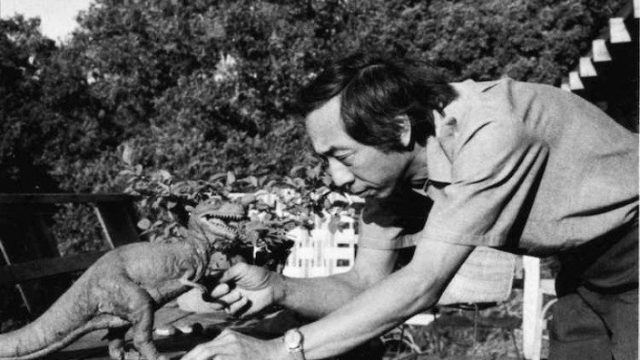Improved sanitation meant that poliomyelitis, known for many years as “infantile paralysis,” started infecting people as adults instead of as children; previously, they would have come in contact with the virus very young. This means that the Wikipedia page for polio survivors has a lot of people who contracted it as adults in the twentieth century—interestingly, it’s quite possible that FDR wasn’t one of them, but that’s its own article that I’m not writing. What seems certain is that Wah Ming Chang contracted it in his early twenties; he would eventually walk again but was left with permanent damage to his breathing.
Two weeks ago, we discussed the man who designed Spock’s ears. This week, let’s talk about the man who designed the tricorder. The communicator. Appears to have done a redesign on the phaser. Designed the tribbles. The Romulan bird-of-prey. The Pillsbury Doughboy. The Time Machine. In 1939, at age 22, he became the youngest person to work in the Disney effects and model department, among other things making an actual wooden Pinocchio, to be used as a model for animators.
One of the references I found for him says he won an Oscar for The Time Machine, but in fact he did not; Academy rules meant that, even though he did the work, he didn’t get the credit. Other people for his company did. No one seems to dispute that it was his design, though. His claim on the phaser is a little more detailed, but if you could get a complete list of his work for film and television, which I don’t think anyone has made, there would be possibly dozens of things on it that the average person recognizes.
Yes, he made Elizabeth Taylor’s headdresses for Cleopatra, but he also did Just Plain Art—as in, he did statues, etchings, watercolours, and so forth. Most of what I can find images of online is his bronzes and his film work, but he was actually considered a child prodigy. And I suppose if you worked with George Pal, Gene Roddenberry, and Walt Disney, your film work is going to attract a lot more notice than the woodprints you made as a particularly talented child.
Chang also exhibits some of the unfortunate facts of life in the United States—he was talented enough to have his first gallery show at age nine, but state law in California meant that he, a Chinese man, could not legally marry his wife, a white woman. He moved to Texas so they could be married. They were together for nearly sixty years and were separated only by her death.
Help keep my own creative children in art supplies; consider supporting my Patreon or Ko-fi!


